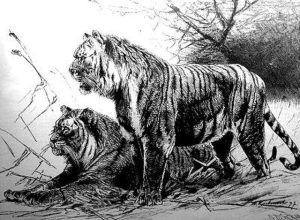27 CENTRAL ASIA
In the early 18th century, the remnants of the western Mongol Empire, including the Kalmyks and Dzungars, faced significant changes as Chinese influence expanded into Central Asia. By 1735, eastern Turkestan had been ceded to the Qing Empire, and by 1759, Xinjiang Province had fully fallen under Chinese control. This period marked the beginning of prolonged Qing dominance over Xinjiang, a vast and diverse region home to various ethnic groups such as the Uighurs, Kazakhs, and Tajiks. The Qing Dynasty’s expansion into Xinjiang was driven by the region’s strategic location along key trade routes and its abundant natural resources.
The Qing administration implemented a series of military campaigns and administrative reforms to consolidate their control over Xinjiang. They established military garrisons and appointed Chinese officials to oversee the region, integrating it into the broader empire. This integration led to significant demographic changes, including Han Chinese migration, which sometimes resulted in tensions with the local population. The Qing Dynasty’s efforts to assimilate Xinjiang involved imposing Chinese laws, customs, and economic systems, impacting the local societies and contributing to a complex legacy of Qing rule in the region.
In southern Central Asia, the dynamics were similarly complex. Muslim khans from Khiva and Bokhara contended for influence over the desert territories east of the Caspian Sea. The 18th century also saw shifts in the Afghan region, with Mirwais Hotak’s successful campaign in 1711 leading to the rise of Mahmud Hotak as Shah. Despite this, the subsequent rise of Nadir Kuli, a leader from the Afshar tribe, altered the political landscape. After Nadir’s death, Ahmed Shah Durrani established the Durani Empire, which shaped Afghanistan’s history for centuries.
As the century progressed, significant demographic and cultural changes occurred in Central Asia. The Pashtuns, an Indo-European speaking group from what is now Pakistan, migrated into southern and southeastern Afghanistan. This migration not only altered the region’s demographic landscape but also had profound effects on the local cultural and social fabric. The Pashtuns were organized into tribal confederations, and their political arrangements were often based on tribal affiliations and customary laws rather than centralized state structures. These arrangements frequently led to shifting alliances and rivalries among different tribes, impacting the region’s stability and governance.
The 18th century in Central Asia saw significant environmental changes, largely driven by human activities. As Central Asian societies intensified their agricultural and trade activities, they exerted considerable pressure on the region’s ecosystems. Overgrazing by livestock, particularly by the nomadic groups such as the Kazakhs and Kirghiz, led to soil degradation and the erosion of pasture lands. The increased demand for trade goods also contributed to deforestation in areas like the Tien Shan mountains, where timber was harvested for construction and fuel. The fur trade, driven by Russian expansion and local demand, further exacerbated environmental stresses. Key species, including the Caspian tiger and various large herbivores, faced significant population declines due to habitat loss and over hunting. These patterns of exploitation not only diminished local biodiversity but also set precedents for future environmental challenges in Central Asia, influencing land use and resource management practices in the centuries to follow.

During the 18th century, Russia made significant strides in Central Asia, driven by its quest for expansion and access to the region’s resources. Russian explorers and traders began to penetrate deeper into Central Asia, seeking valuable commodities such as fur, minerals, and agricultural products. The Russian Empire established outposts and trading posts along key routes, which facilitated the flow of goods and information between Central Asia and the broader Russian territories. This expansion often led to conflicts with local khans and rulers, as well as interactions with various nomadic groups.
The Russian presence in Central Asia was marked by a complex mix of diplomacy, military engagement, and economic influence. Russia’s influence grew as it formed alliances and treaties with some local leaders while confronting others through military campaigns. The efforts to extend control over Central Asia contributed to the region’s gradual integration into the Russian sphere of influence. By the end of the century, the groundwork was laid for further Russian expansion and consolidation in Central Asia, setting the stage for increased geopolitical competition and transformation in the 19th century.
